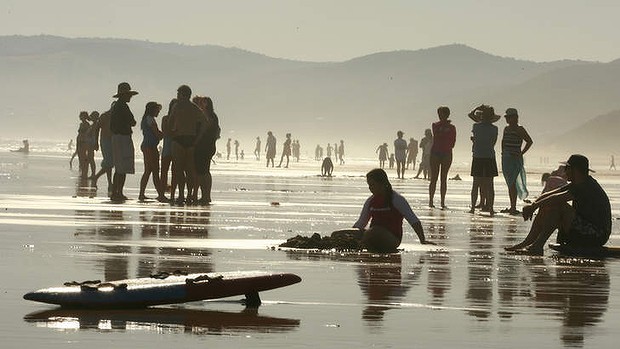Temperatures are on course to rise at least 4 degrees by the end of the century, according to research that finds earlier climate models projecting smaller increases are likely to be wrong.
The research, by a team led by the University of NSW, says a 4-degree rise in temperature would be potentially catastrophic for agriculture in warm regions of the world, including Australia.
It cracks open one of the biggest problems in climate science
Forecasts in many climate models for lower temperature rises were based on assumptions that clouds might help limit temperature increases.

New research suggests temperatures will rise between 3-5 degrees for a doubling of C02. Photo: Michael Clayton-Jones
But the team claims to have found the key to predicting cloud behaviour, and forecasts that clouds will not be nearly as helpful as thought in many models.
Current models estimate a doubling of carbon dioxide in the atmosphere - a level that may be reached by mid-century - will result in temperature rises of between 1.5 degrees and 5 degrees. Instead, the likely range will be 3-5 degrees for twice the amount of C02, the study found.
The publication of the research comes as the top business adviser to Prime Minister Tony Abbott has again caused controversy with comments about the ''delusion'' of global warming and an assertion that climate change policy has destroyed Australia's manufacturing sector and competitiveness.
In an opinion piece in The Australian newspaper, Maurice Newman, Mr Abbott's pick as head of his Business Advisory Council, said high energy costs caused by the carbon tax and the renewable energy target, introduced under the Howard government, had eroded competitiveness.
Under Labor and the Greens, Australia had been taken hostage by ''climate change madness'', Mr Newman wrote.
The research, published on Wednesday in the respected journal Nature, comes as Australia ends its hottest year in more than a century of data collection, with 2013 eclipsing the record set in 2005.
Steven Sherwood, lead author of the report and a professor at UNSW's climate change research centre, said the biggest uncertainty in modelling climate change in the past 25 years had been the changes in clouds.
''[This research] cracks open one of the biggest problems in climate science,'' he said.
The key to the climate's responsiveness to rising carbon dioxide levels is the behaviour of clouds and whether they help to limit increases by cooling the surface as well as reflecting sunlight back to space.
Sometimes the air rises only a few kilometres to a boundary layer before descending back to Earth. At other times it may climb as high as 10-15 kilometres.
The more optimistic of the 43 models the researchers examined predict air mostly reaches the higher level, forming clouds which have a cooling effect.
''These models have been predicting a lower climate sensitivity but we believe they're incorrect,'' Professor Sherwood said.
Shallower circulations, instead, tend to pull water vapour away from the level at which clouds form, causing them to dissipate.
''Such mixing dehydrates the low-cloud layer at a rate that increases as climate warms'', the report found.
''The net effect of [climate change] is you have less cloud cover,'' Professor Sherwood said.
Will Steffen, an adjunct professor at Australian National University and a member of the Climate Council, said the paper was ''right out on the forefront of the sort of research we need to do on clouds''.
''The more we get research like from [Professor Sherwood] and his group, the more confidence we'll have in being able to say where in that range [the temperature increase] is likely to fall.''
The CO2 level of the atmosphere in 2012 was 393 parts per million, or 41 per cent higher than in pre-industrial times, the World Meteorological Organisation said. The level is rising at an accelerating rate - more than two parts per million a year - as humans burn more fossil fuels and cut down forests.
Global temperatures have risen about 0.8 degrees since about 1880, with system lags and air pollution reflecting sunlight partly explaining why the rise has not been higher. ''We've been hoping for the best and not planning for the worst,'' Professor Sherwood said.
''And now it's looking like the best is not very likely.''
Copyright © 2014 Fairfax Media
